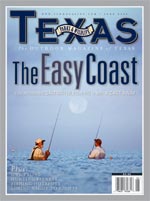
Texas Reader
Slicing America in Half
Two routes to a better understanding of the north/south dividing lines between East and West.
By Charles J. Lohrmann
In North Texas, Interstate 35 runs roughly parallel to the 100th Meridian, which is described as the north/south dividing line between the moist East and arid West. This designation is attributed to John Wesley Powell who applied the label in his USGS report of 1879. Since then, literary giants Walter Prescott Webb and Wallace Stegner explored the significance of this north/south division. Now we have two new books that take on the territory: Camino del Norte: How a Series of Watering Holes, Fords, and Dirt Trails Evolved into Interstate 35 in Texas (Texas A& M University Press, 284 pages, $29.95 cloth) and America’s 100th Meridian: A Plains Journey (Texas Tech University Press, 114 pages, $39.95, cloth). Camino del Norte reaches as far back as pre-Columbian Texas to discuss how primitive trail systems probably led to trade among geographic regions and how this ancient trade and travel should be tied to modern affairs. The book presents intricate detail on the evolution of subsequent military roads and trade routes into today’s mammoth interstate highway. America’s 100th Meridian tells the story of the region in textures of flaking paint and rust juxtaposed against stunning sunsets and big skies. Intense color photographs narrate the 1,500-mile, often-inhospitable route from Texas to Canada.
